The Dargle River rises on Dargle Farm and meanders through the valley for a few kilometres before joining the uMngeni River near the Petrusstroom bridge. 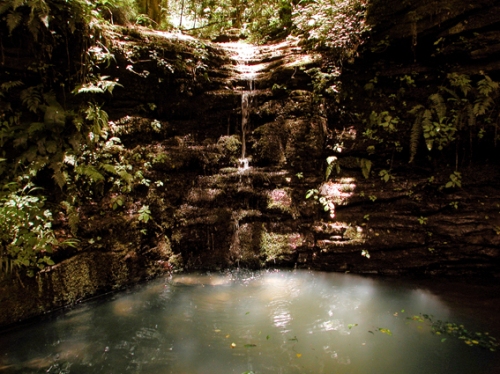
The Dargle/Impendle road crosses the river on Benn Meadhon about 8kms from the R103. The Dargle Conservancy recently began to clear some of the invasive vegetation which was smothering the banks in the area near the bridge.
The main negative impact of invasive alien plants is that they supplant naturally occurring species and subsequently cause the loss of bio-diversity, and excessive water consumption. As we are custodians of the water supply of millions of downstream users, it is important that we do our best to ensure good, clean water leaves the valley. We contracted one of the well trained DUCT River Care teams, lead by Alfred Zuma to work for eight days in the area. 
Over the past five years DUCT has significantly reduced the riverside infestations of bugweed, balloon vine, mulberry trees, Mauritius thorn, water lettuce, water hyacinth, lantana, syringa, wattles and gums along the ‘Duzi and uMgeni rivers using a combination of physical removal, herbicides and biological control. Their funding has reduced substantially this year, so Mr Zuma and others no longer have regular contracts. 
On our first visit to the site, we could hardly see the river at all because of the American Bramble along the banks. It was taller than the men! 
Paths had to be hacked through to reach it and they had to wade in the water to get to the canes that were on the river side. 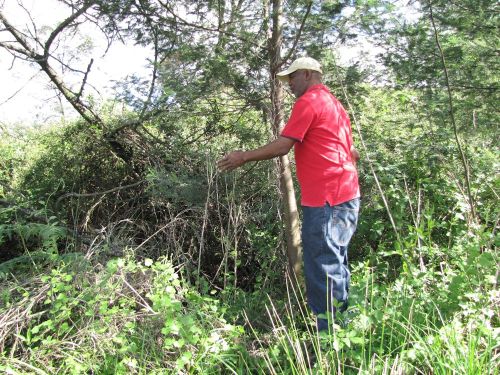
The dead bramble is the most obvious difference now. We plan a follow up later in the summer to check if there is any which escaped the treatment. Look, we can see the river! 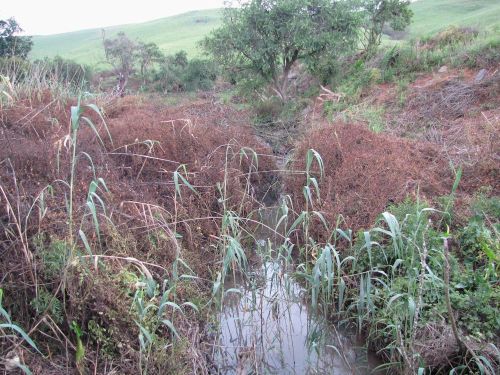
Canes/stems of American bramble only live for 18 months. New stem growth (primocanes) push through soil surface from Oct. In the first season, this stem does not produce fruit, only leaves. In the next growing season, the primocane becomes a floricane which produces flowers from September and then fruit. Once the fruit has ripened the floricane dies. Primocanes generally arise close to floricanes and are seen as replacement stems. Seeds are spread by birds however do not germinate easily and most spread is vegetative from an extensive root system with fine lateral roots. 
Treatment should be focused on methods that will kill the root and the dormant buds below ground as spread is predominately from roots and the above ground stem dies naturally after 18 months. This means spaying the primocanes when they are >0.75m high as there is then sufficient leaf area to take up the herbicide.
There were plenty of wattle trees too. Some of the bigger ones had been treated before and were already dead. The rest were frilled or cut and treated with herbicide. 
Wattle is easily controlled with herbicide, however its vigorous growth from seed and the length of time the seed remains viable means that wattle control requires a long term commitment as follow up operations could continue for many years depending on the soil seedbank. 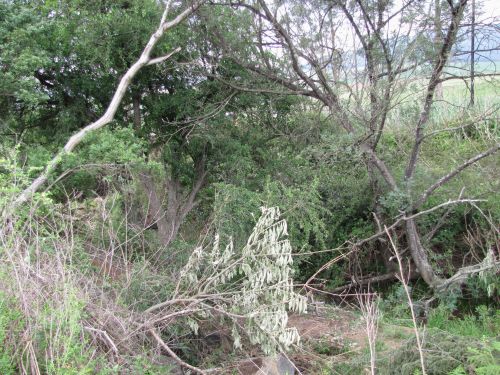
There was plenty of everyone’s favourite – Bugweed! Once again, there had been attempts to clear previously, which was not done properly. 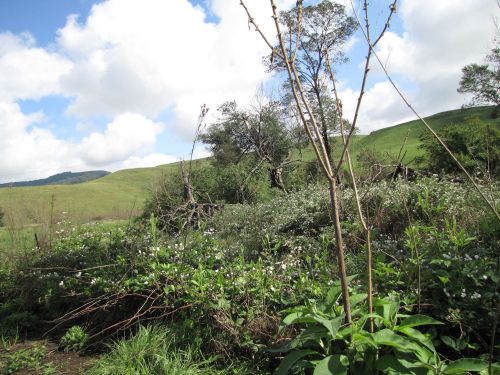
Despite its ability to grow vigorously, bugweed is easily controlled with herbicide and regular followups are necessary. It is particularly important to control young or coppicing bugweed before it sets seed. Bugweed in particular needs a low, smooth, level cut, as provided by a pruning saw. With a calemba cut, the multiple blows ‘pop’ the bark away from the stem which affects the herbicide efficacy. Herbicide needs to be applied within five minutes otherwise it is not effective. Once clearing started we found lots of lovely indigenous trees and shrubs – Clausena anisata and Maytenus heterophylla in particular. There are some tree ferns on the banks.
Poppies and Ranunculus multifidus in the sunshine, Scadoxus and Thunbergia natalensis in the shade of the trees.
It will be really interesting to observe what else pops up when the treated vegetation had completely died.
Mr Zuma’s team thoroughly enjoyed working on the Dargle River as they are passionate about river health. They are keen to return and see the difference that their efforts have made. The water in the stream is really murky, which is disappointing. Run off from intensive farming operations along the banks? We will conduct miniSASS tests there soon to see what sort of condition the water is in and hopefully, over time will see some real improvement. 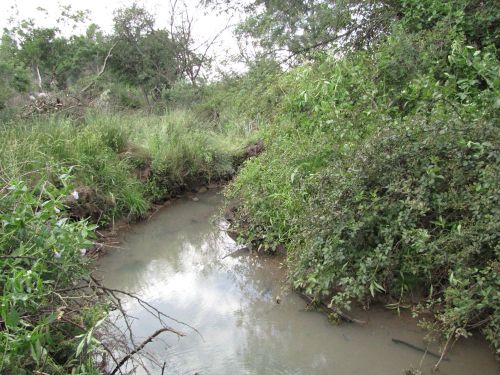
Unfortunately the Dargle Conservancy do not have many thousands of rand required to continue clearing the length of the river. We will do as much as we can with funds available (particularly follow ups), but hope that landowners along the banks will also work to improve the riverine areas of which they are custodians. 
Iain Sinclair, who owns the land adjacent to the river, is keen to see it become a “Dargle Picnic Site” – what a wonderful idea! We can already imagine adding a Dargle River Ramble to the schedule of regular, inspiring Midlands Walks. Taking care of the fields, forest and rivers is the rent we pay for living in this wonderful valley. Thank you Iain for paying for the herbicide to clear the river banks and Lion’s River Club for their contribution to the herbicide used to clear their verges.
The details on IAP control described in this post are from the excellent Mondi Guides: Best Operating Practice – IAP Treatment Specifications. View them all here: http://www.midlandsconservancies.org.za/invasiveplants.php
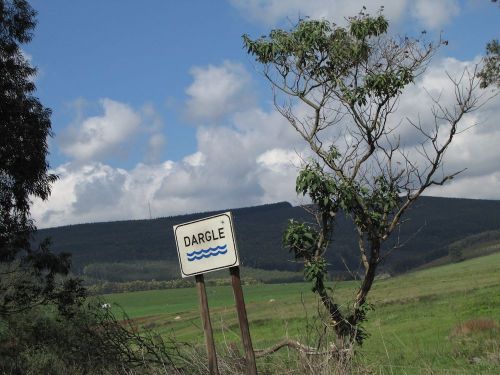
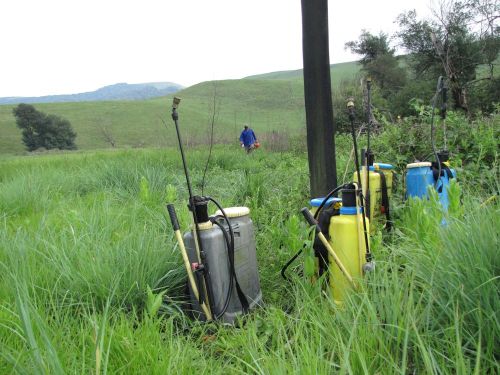
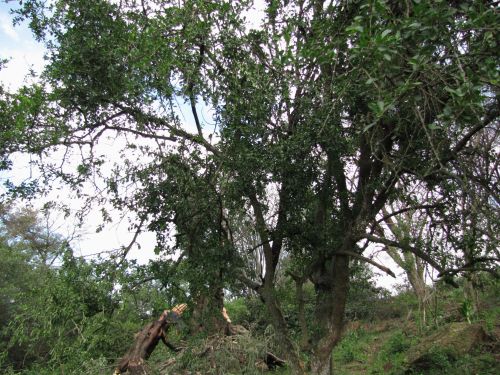



Thrilling tale of energetic dedication, seeking to rescue the stream banks from ourselves and our historic foolishness. Strength to your arms, and the funds in the bank to keep up such good work
LikeLike
What an interesting albeit alarming tale of the alien invaders – a seemingly impossible mission tackled with tenacity and passion. Thank you Darglelites for caring for this portion the beautiful MM.
LikeLike